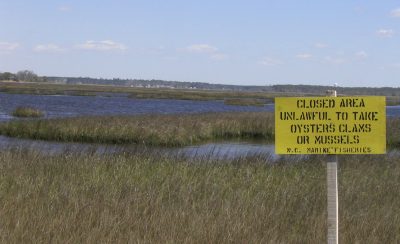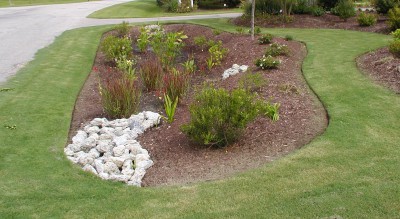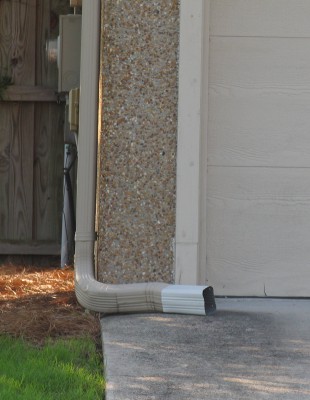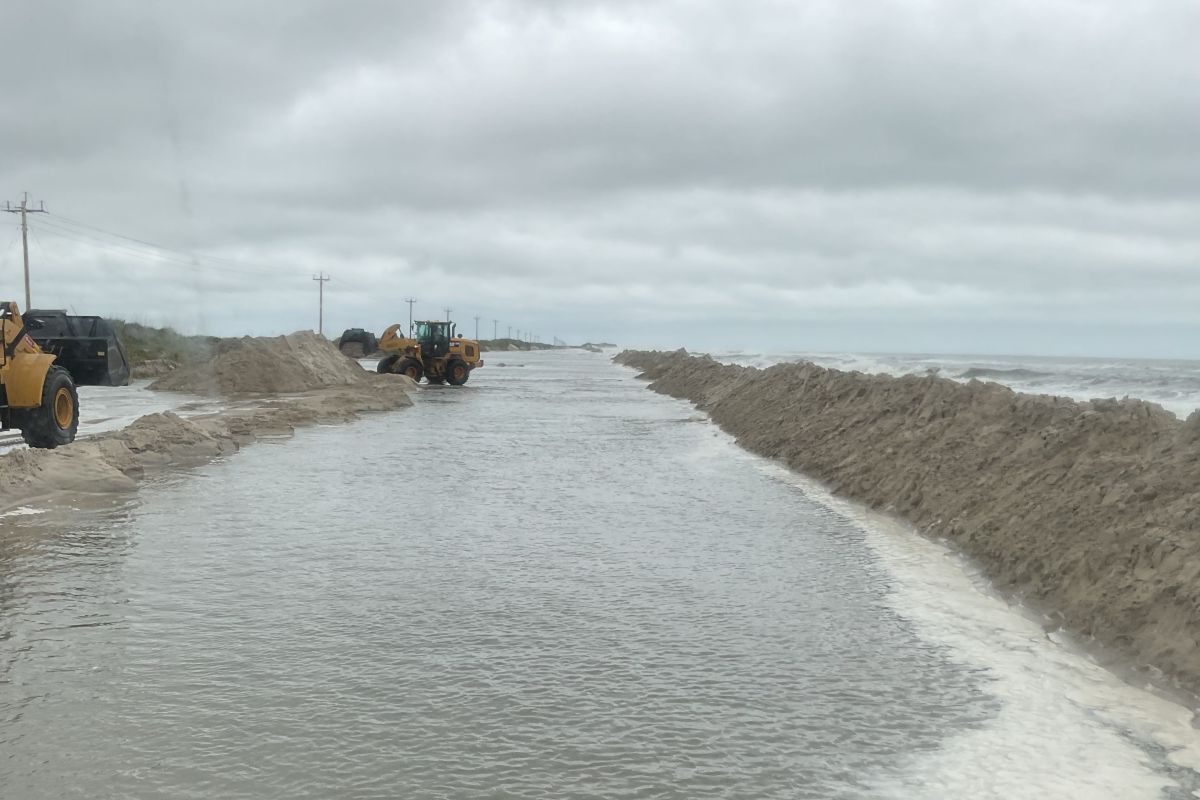Reprinted from the Tideland News
CEDAR POINT — After months of planning, the N.C. Coastal Federation has begun work with the town of Cedar Point and East Carolina University on a project to reduce the flow of stormwater runoff from neighborhoods into the impaired White Oak River.
Supporter Spotlight

The project, which focuses on common-sense, low-cost measures, is literally at the grassroots, or at least grass-blades level: A major effort is to get homeowners to redirect gutter downspouts away from driveways that lead to streets and instead to direct the flow into lawns or rain gardens.
Lauren Kolodij, the federation’s assistant director, said her group will buy and install the needed equipment for homeowners willing to participate. And in many cases, it’s really simple: A $7, plastic downspout extender, available in many hardware departments, will do the trick, and do it well.
Studies by N.C. State University have shown that using the extensions, which direct rain from gutters to vegetated areas instead of to driveways, patios and other hard surfaces, can reduce stormwater runoff from properties by at least 50 percent, and sometimes by as much as 90 percent, Kolodij said. And bacteria- and pollution-laden stormwater, as a previous federation-funded study showed, is by far the major reason why large portions of the White Oak are considered by EPA to be impaired for shellfish growing.
Kolodij said the work done this summer has included neighborhood field surveys, some of which have already been completed, and monitoring done by an ECU team that includes professors Eban Bean and Charles Humphrey. Bean is in the Department of Engineering and is a scientist in the school’s Institute for Coastal Science and Policy. Humphrey is in the Department of Health Education and Promotion and specializes in water quality.
The project is funded largely by a $272,000 EPA grant awarded to the federation.
Supporter Spotlight

Going Door to Door
The initial focus has been the Marsh Harbor residential subdivision off N.C. 24. Water from that area drains to Boathouse Creek, which flows into White Oak River. The project is also going to take a look at Ocean Spray, an older neighborhood farther up the creek.

Federation staff members walked the neighborhood earlier this summer, going door to door to look at the downspouts and other stormwater management features and talking to property owners. They found at least 30 downspouts that discharged water onto driveways.
The next step, Kolodij explained, is to talk to those property owners to see if they would be willing to make the improvements. They will also have the opportunity get rain barrels, which store rain water for use on plants and lawns.
Federation and ECU staffers also noticed during their field surveys that the street-side swale system, intended to drain the roads, is inadequate in many places. The federation will get engineers involved in the project to see if there are simple solutions to that problem. It’s possible that the same type of vegetation that’s used in constructed wetlands could be used in the swales to take up some of the water.
Kolodij stressed that none of this implies that property owners have been doing anything wrong; it’s just an opportunity to help them do things better.
“Over the years, we have altered the landscape and modified the hydrology, and to clean up the river, we’ve got to get back as close as possible to where we were before we did that,” Kolodij said.
Long-term Effort
The federation’s latest work in Cedar Point is part of an effort that started in 2006 to restore portions of the lower White Oak River. A study the nonprofit group did that year found very high levels of fecal coliform bacteria in four watersheds near Cedar Point. In the most extensive bacteria testing ever done on the river, more than 200 water samples were drawn from almost 70 scattered sites. Eighty-nine percent exceeded the federal health standard for shellfish waters. Of the 113 samples taken from the largest watershed, Boathouse Creek, all but three exceeded the standard.

Cumulatively, runoff discharges in the White Oak watershed are impairing more than 2,200 acres, or almost two-thirds of the designated shellfishing waters of the lower White Oak River.
The study outlined a series of voluntary steps that could be taken to reduce the flow of stormwater into the river. They included reworking existing storm water drainage ditches to allow more runoff to soak into the ground before it reaches the river, educating people about the effects of stormwater and how to prevent their pets from contributing to bacteria pollution and allowing developers to use more innovative techniques to control runoff.
Kolodij noted that the town has been an enthusiastic partner in the effort to improve water quality. Cedar Point has even encouraged low-impact development, or LID, by posting an LID manual, developed by the federation, on its website.
The goal of the project is to do enough effective work to eventually eliminate an estimated 55,000 gallons of runoff from what is referred to as a one-year storm, which is defined as the worst storm expected in a given year, or about 3.5 inches of rain over a 24-hour period.
While the actual removal of the runoff is important, so is the monitoring by ECU, Kolodij said. “Without monitoring before and after the project – determining the volumes of runoff before and after the changes – you don’t really quantify the impacts,” she said. “It’s important to see what works best and to be able to tell people what they can do to have the most impact.”







